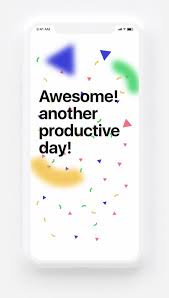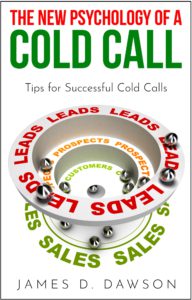Have a Daily Plan
One of the most important things you can do as part of an effective sales strategy is have a daily plan.
A daily plan will be your sales strategy guide that keeps you on track for meeting your goals. The sales daily  plan is the first part, then you need a weekly and monthly plan. Pretty much they all work the same way, just with longer term goals so today we want to talk about a sample daily plan you can put together to be a successful sales person, or successful at any endeavor.
plan is the first part, then you need a weekly and monthly plan. Pretty much they all work the same way, just with longer term goals so today we want to talk about a sample daily plan you can put together to be a successful sales person, or successful at any endeavor.
Having a plan keeps you honest and on track toward your long term sales goals. Typically, you would start with a yearly plan, then monthly, then weekly and then the daily plan. With each step down to a smaller time frame you identify the goals from the higher level plan and write down how you are going to meet them.
Think of your daily plan like the smallest magnification of the microscope that you slowly magnified down from yearly to daily. The daily sales strategy plan gives you the most focused and immediately actionable tasks you need to do to meet your long term sales goals.
This is a huge part of any inside sales training or outside sales training. Depending on your job you might have to do both inside and outside sales so you would have different plans for each of those tasks.
So, what would a sample daily sales routine look like?
There are a lot of variables but the items I like my inside sales staff to focus on each day are:
Cold Calls. Cold calls require the most mental and emotional fortitude so if possible I like to encourage my inside sales people to focus on those first. This way they can get these out of the way while they have the highest energy levels and have experienced the least amount of rejection for the day.
Follow up calls. These are just what they sound like, follow up calls to previous cold calls that were not closed but are still considered at least warm leads. This is still a demanding task so it is best to move into it right after new cold calls. You can also do cold lead follow calls if you do not have enough warm lead phone calls, otherwise I like to move the cold lead follow up calls to lead generation or a longer term follow up time period.
Revenue recovery calls. After the follow up calls are finished I like to include calling old customers to try and recover lost revenue. These calls are a little easier because you typically have old contacts you can call or at least the sales person knows a little bit about the customer and how their need relate to your company. If the customer was properly contacted after they left, you should also know why the left and have an idea of what you can do to get the customer’s business back.
Call newly secured accounts. Sometimes this will be passed off to another manager but the sales person should always make periodic calls to new accounts though out the life cycle of the customer if the sales person is the one who closed the account. If a sales person who is not currently with the company closed the account then they can be managed by another person. But if you closed the account, you should stay in contact as an ongoing part of an effective sales strategy plan.
should always make periodic calls to new accounts though out the life cycle of the customer if the sales person is the one who closed the account. If a sales person who is not currently with the company closed the account then they can be managed by another person. But if you closed the account, you should stay in contact as an ongoing part of an effective sales strategy plan.
Updating customer relationship management (CRM) program. This should actually be done as you speak with the customers. It is best to make all your notes while they are fresh in your mind, but if for some reason you haven’t then do it now. It must be done the same day you made the calls, otherwise you might forget.
Administrative follow up items. This would include sending emails follow ups, putting proposals together, sending letters, sending promotional items, anything that you either promised a customer you would do or you need to do as part of your sales follow up administrative items.
New Lead generation. I usually put this last because if something is going to get pushed back a day this is typically the one that can be postponed, that is as long as you have a sufficient pipeline to keep you busy making your cold calls. If you don’t then you need to focus on lead generation. Depending on your industry this might not be that difficult.
There are a couple of things I have told my sales people over the years which you should keep in mind as you set up your daily sales routine.
If you are an inside sales person then, “If you are not on the phone we are not making any money.” If you are an outside sales person the “If you are not visiting a customer, we are not making any money.”
The biggest point is, it is usually the hardest part of a sales person’s job that actually makes the company money. By that I mean making cold calls whether in person or on the phone. As a salesperson you have to remember that if you want to be successful and make your company successful you have to do the hard things well…and you have to do them often.
The second thing I like to tell a sales person is that in an organization typically 80% of the sales are made by 20% of the sale people. I am sure you have heard of the 80/20 rule before, not sure why it always holds true but it does in almost every situation.
The question is, are you going to be in the 20% or the 80%? That is a decision every sales person has to make for themselves.
“Sales don’t always have anything to do with good or brilliant or original. Sales are about appeal.” – M. J. Rose
Read Next: Every Sale is Different

Recent Comments